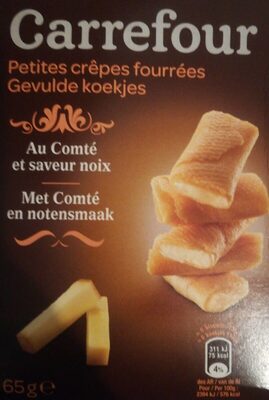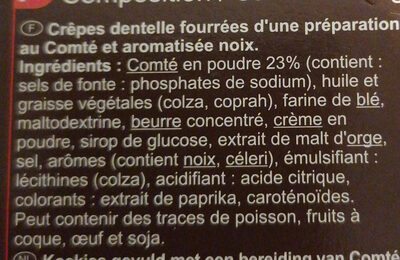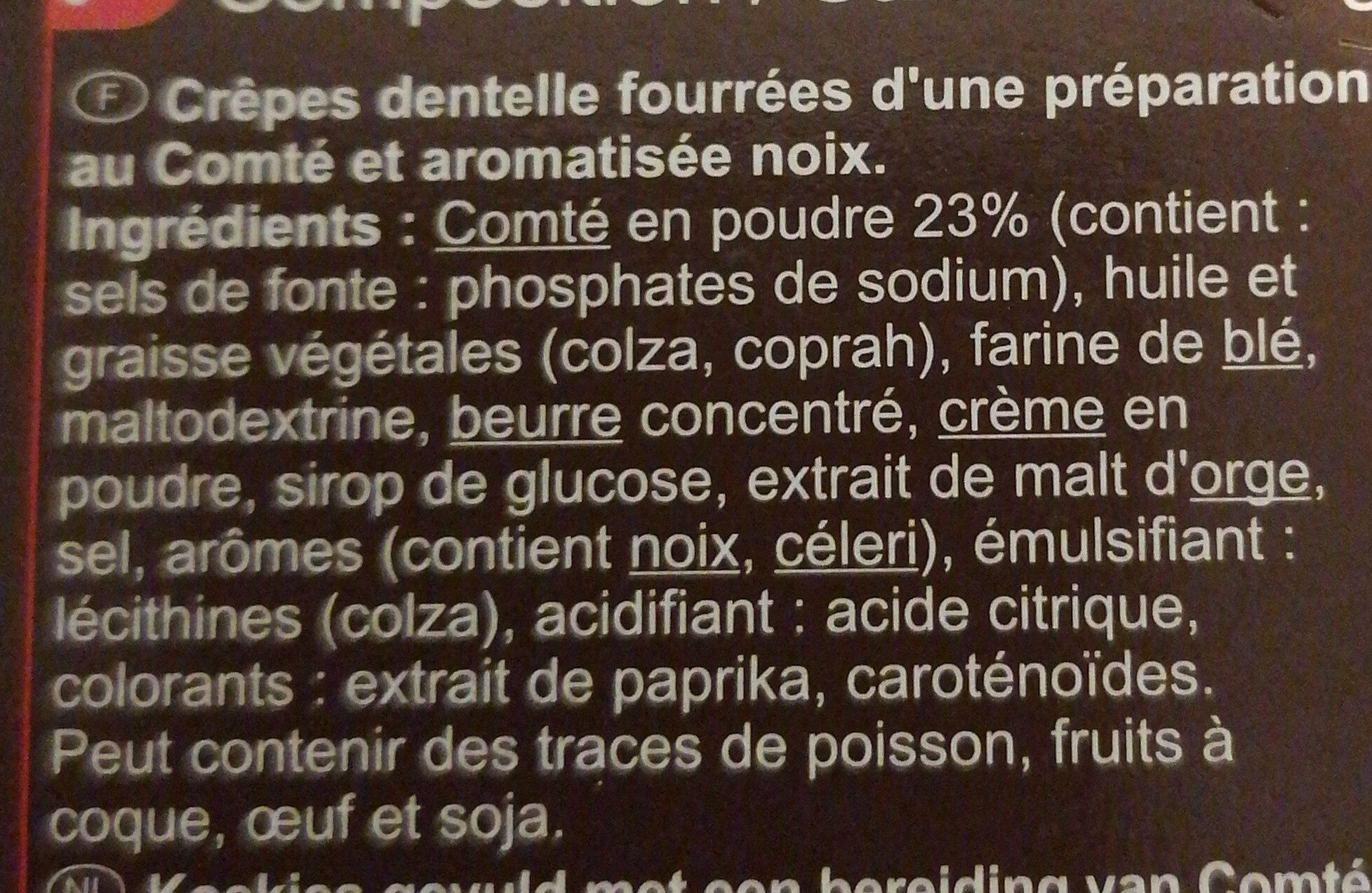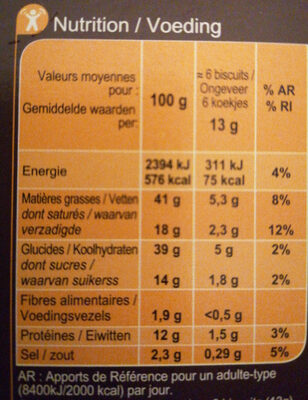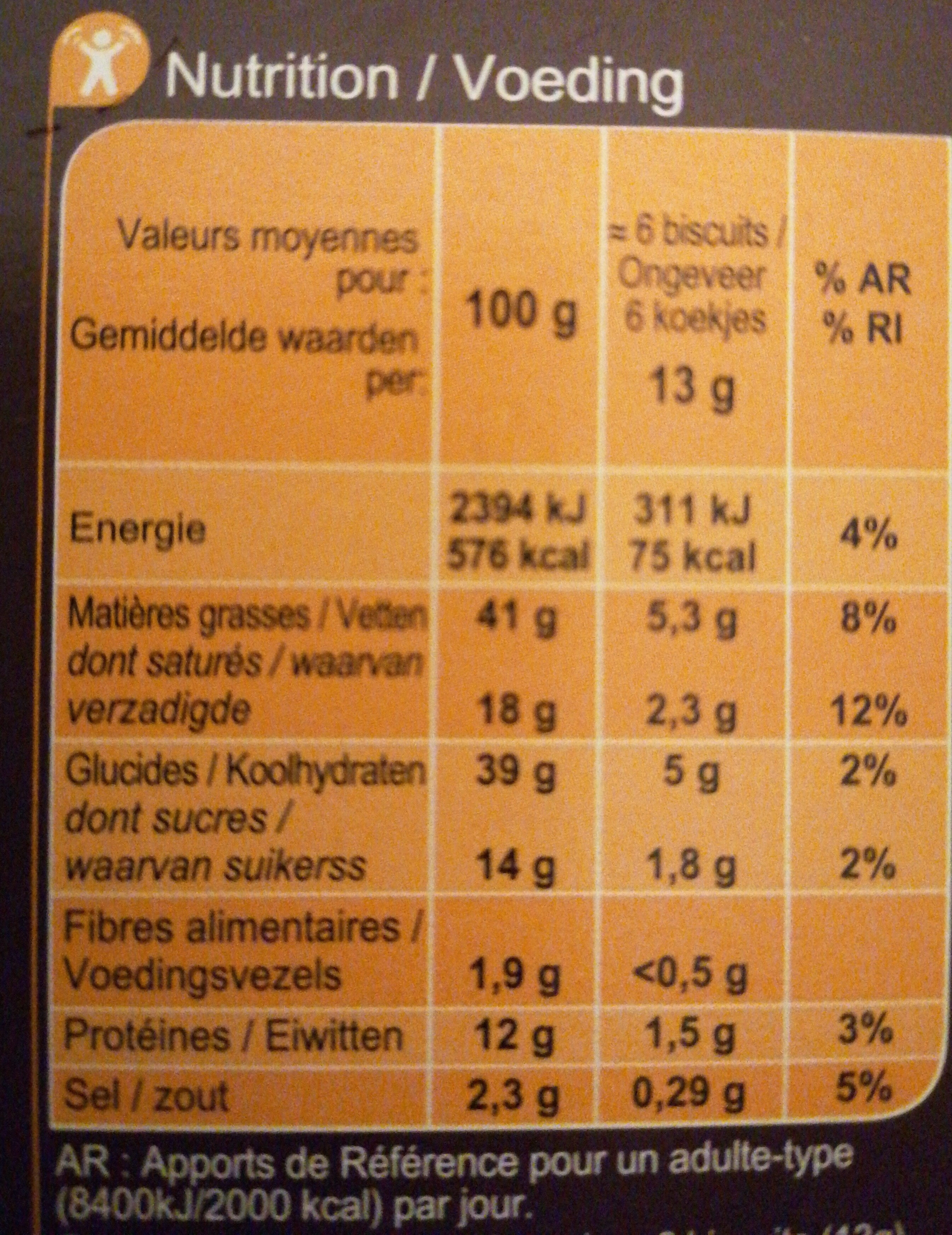Mini crêpes Fourrage au Comté - saveur Noix - Carrefour - 65 g
This product page is not complete. You can help to complete it by editing it and adding more data from the photos we have, or by taking more photos using the app for Android or iPhone/iPad. Thank you!
×
Some of the data for this product has been provided directly by the manufacturer Carrefour.
Barra-kodea: 3560071190408 (EAN / EAN-13)
Izen arrunta: Crêpes Dentelle fourrées (57%) d'une préparation au Comté déshydraté saveur Noix.
Kopurua: 65 g
Ontziratzea: fr:Boîte carton, fr:Sachet plastique / aluminium
Markak: Carrefour
Kategoriak: en:Snacks, en:Salty snacks, en:Appetizers, en:Crackers, en:Puffed salty snacks, en:Salty snacks crackers garnished with cheese
Etiketak, ziurtagiriak, sariak:
en:Green Dot, en:Made in France
Traceability code: EMB 29217A - Pont-Aven (Finistère, France)
Dendak: Carrefour
Saltzen diren herrialdeak: Belgika, Frantzia, Italia, Espainia
Matching with your preferences
Other information
Conservation conditions: À conserver dans un endroit frais et sec. Pour une dégustation optimale, à consommer de préférence avant le / Numéro de lot : voir sur le côté du paquet. Après ouverture du sachet, à conserver dans un emballage hermétique et à consommer dans les 7 jours.
Customer service: Interdis - TSA 91431 - 91343 MASSY Cedex - France.
Report a problem
Datuen iturria
Product added on by openfoodfacts-contributors
Last edit of product page on by naruyoko.
Produktuaren orria -gatik editatua ecoscore-impact-estimator, kiliweb, off.3ccf874c-cd40-4ad9-beed-00d5c03e74c1, org-carrefour, packbot, roboto-app, teolemon, ticqs, yuka.UTRJTUhiMGZtOWtMbzhVTzRTN2MrTmtwbjVxa2VEdVpML1l0SVE9PQ.
